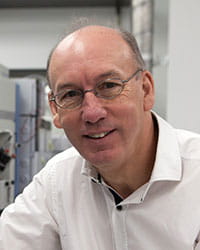Glycocholic Acid Proves Effective Against Newly-Identified Amidation Defect
Over the past 30 years, James E. Heubi, MD, and Kenneth D. Setchell, PhD, have revolutionized the treatment of liver disease in children, and their novel findings led to the March 2015 FDA approval of the drug Cholbam. This bile acid treatment – when given to children – tricks the liver into thinking it is producing enough of its own healthy bile acid so that it shuts down production of defective bile acids that lead to liver disease.
Now, Heubi and Setchell have identified another liver enzyme irregularity called an amidation defect, in which the liver produces too much unconjugated cholic acid because the amino acids glycine or taurine cannot conjugate it effectively. Normally, cholic acid dissolves fats and helps the body excrete cholesterol.
Heubi and Setchell identified five children with the amidation defect, all of whom showed mutations in the BAAT gene and exhibited failure to grow, vitamin absorption deficiencies or choleostasis. After treatment of up to 92 months with glycocholic acid (GCA), the patients were able to absorb the fat-soluble vitamins D-2 and tocopherol, showed improvement in growth, and experienced no side effects.
This is the sixth of 17 known liver enzyme defects that Heubi and Setchell have identified, and they are working on testing and funding for development of a GCA drug. Their work appeared online Dec. 23, 2014 in Hepatology .
“All of these defects manifest as fatal forms of liver disease if they’re not diagnosed, and there is no other form of liver disease you can reverse like this,” Setchell says. “This is lifelong therapy for all these kids. We believe that GCA should be the standard of care and supplemental fat-soluble vitamins should be the standard of care for affected patients.”






